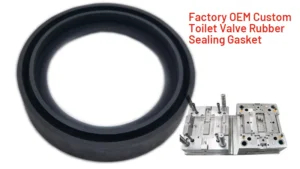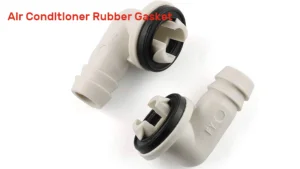Cable overmolding is a specialized manufacturing process that enhances the durability and functionality of electrical components by encapsulating wires and connectors in a unified, robust structure. This technique involves injecting a layer of durable thermoplastic material over existing wires and connectors, effectively sealing and protecting them from external environmental factors. In this post, we will explore the cable overmolding process, applications, and its materials.
The Cable Overmolding Process
Cable overmolding is a sophisticated manufacturing process that transforms individual wires and connectors into a cohesive unit. This process not only enhances the durability and functionality of the cables but also provides a seamless aesthetic. Below is an overview of the general workflow of cable overmolding, followed by a detailed step-by-step breakdown of each phase.
1. Mold Selection
The first step in the cable overmolding process is selecting the appropriate mold. Manufacturers can choose between:
Custom Molds: Designed specifically for a particular application, custom molds allow for precise control over the shape, size, and features of the overmolded cable. This option is ideal for unique designs or when specific strain relief features are required.
Existing Designs: For more standardized applications, existing molds can be utilized. This approach is often more cost-effective and quicker to implement, making it suitable for high-volume production runs where customization is less critical.
The choice between custom and existing molds depends on factors such as production volume, budget, and specific design requirements.
2. Component Placement
Once the mold is selected, the next step involves positioning the cables and connectors within the mold.
Cables are stripped of insulation at the ends where they will connect to terminals or connectors. This ensures a solid electrical connection.
Cables and connectors are carefully arranged within the mold to ensure proper alignment and coverage. This placement is crucial to achieving optimal strain relief and ensuring that the overmolded material effectively protects all components.
Depending on the mold design, components may be secured in place using fixtures or supports to prevent movement during the injection process.
3. Material Injection
With the components securely positioned, the next phase is the injection of thermoplastic materials into the mold.
The first is material selection: The choice of thermoplastic material (e.g., PVC, TPU, TPE) is critical, as it affects the final product’s flexibility, durability, and resistance to environmental factors.
The next is the injection process. The selected thermoplastic is heated until it reaches a molten state and then injected into the mold under high pressure. This ensures that the material fills all cavities and encapsulates the cables and connectors completely.
4. Cooling and Solidification
After the material is injected, it must cool and solidify to form a durable overmolded structure.
The mold is typically cooled using a water or air cooling system to expedite the solidification of the thermoplastic. The cooling time can vary depending on the material used and the thickness of the overmold.
As the material cools, it transitions from a molten state to a solid form, firmly bonding to the cables and connectors. This solidification is crucial for achieving the desired mechanical properties and ensuring that the overmolded structure is robust and reliable.
5. Demolding
Once the material has solidified sufficiently, the mold is opened, and the overmolded cable assembly is removed. Any excess material, known as flash, may be trimmed away to achieve a clean finish.
In summary, the cable overmolding process involves careful planning and execution at each stage, from mold selection to cooling and solidification. By following these steps meticulously, manufacturers can produce high-quality overmolded cables that meet the rigorous demands of various applications while ensuring durability and reliability.
Cable Overmolding Design Considerations
When designing cable assemblies, engineers leverage the overmolding process to enhance performance and durability, particularly by providing strain and bend relief. This includes integrating grommets into the assembly for points where cables must pass through housings or openings, as well as covering connector backshells to protect termination points and contacts.
Material Selection: The choice of material for both the mold and the overmold is critical. Engineers must consider the properties of the molding material, such as flexibility, durability, and resistance to environmental factors, to ensure that the final product meets performance requirements.
Aesthetic Considerations: The appearance of the overmolded part is also important. Designers should think about the desired finish and how the final product will look after the molding process is complete. This includes considering color options and surface textures that can enhance the product’s visual appeal.
Tooling Parameters: The operational parameters of the molding machine must be taken into account during the design process. This includes understanding the capabilities of the machine and how they align with the specifications of the mold and the materials being used.
Prototyping: To minimize costs associated with hard tooling, it is advisable to create a 3D printed model of the overmold. This allows for testing the form and fit of the design before committing to more expensive tooling. Adjustments can be made based on the prototype’s performance, reducing the risk of costly modifications later.
Materials Used in Cable Overmolding
Cable overmolding utilizes various materials to enhance the durability and functionality of cable assemblies. Below is an overview of common materials used in overmolding, their properties, and key applications.
Thermoplastic Rubber (TPR)
TPR combines the elasticity of rubber with the processability of plastics. It offers excellent flexibility and durability, making it suitable for applications requiring resistance to abrasion and impact. TPR is also resistant to a wide range of chemicals and can withstand high temperatures, making it ideal for harsh environments.
Polyvinyl Chloride (PVC)
PVC is a widely used thermoplastic known for its good electrical insulation properties. It is cost-effective, easy to process, and provides reliable protection against oxidation and corrosion. PVC can withstand varying temperatures and is often used in applications requiring electrical insulation.
Thermoplastic Elastomers (TPE)
TPEs are flexible and durable materials that exhibit excellent resistance to environmental factors such as UV radiation and ozone. Their weather resistance makes them suitable for outdoor applications. TPEs also offer good chemical resistance, making them ideal for use in challenging environments.
What Are the Difference Between Pre-Mold and Overmold?
In manufacturing, premolding and overmolding are both techniques that are molding one material over or around another. However, they serve different purposes and are used in different ways:
1. Premold
Premolding is creating an initial part or insert through one molding process, which is then placed in a second mold to have additional materials added around or over it.
The premolded part is usually created separately and allowed to cool. It’s then used as an insert for another molding process to create a complete or multi-material component.
2. Overmold
Overmolding specifically refers to molding an additional layer or material directly over an existing part, usually to enhance function, grip, or aesthetics.
Overmolding is commonly used to add ergonomic features, like rubberized grips on tools, improve durability, or provide additional functionality (e.g., watertight sealing) to the finished product.
Exploring Custom Solutions with Zhongren
Cable overmolding overmolded cables and connectors in a protective layer of durable thermoplastic material, make standard cable assemblies robust, reliable, and visually appealing products to defect moisture, abrasion, and chemical and temperature fluctuations. Custom molds and material selection ensure that the overmolded cable assembly perfectly meets the requirements, and allows the customers to create cable assemblies that align with your brand identity. Welcome to contact Zhongren for more information about the cable overmolding.






